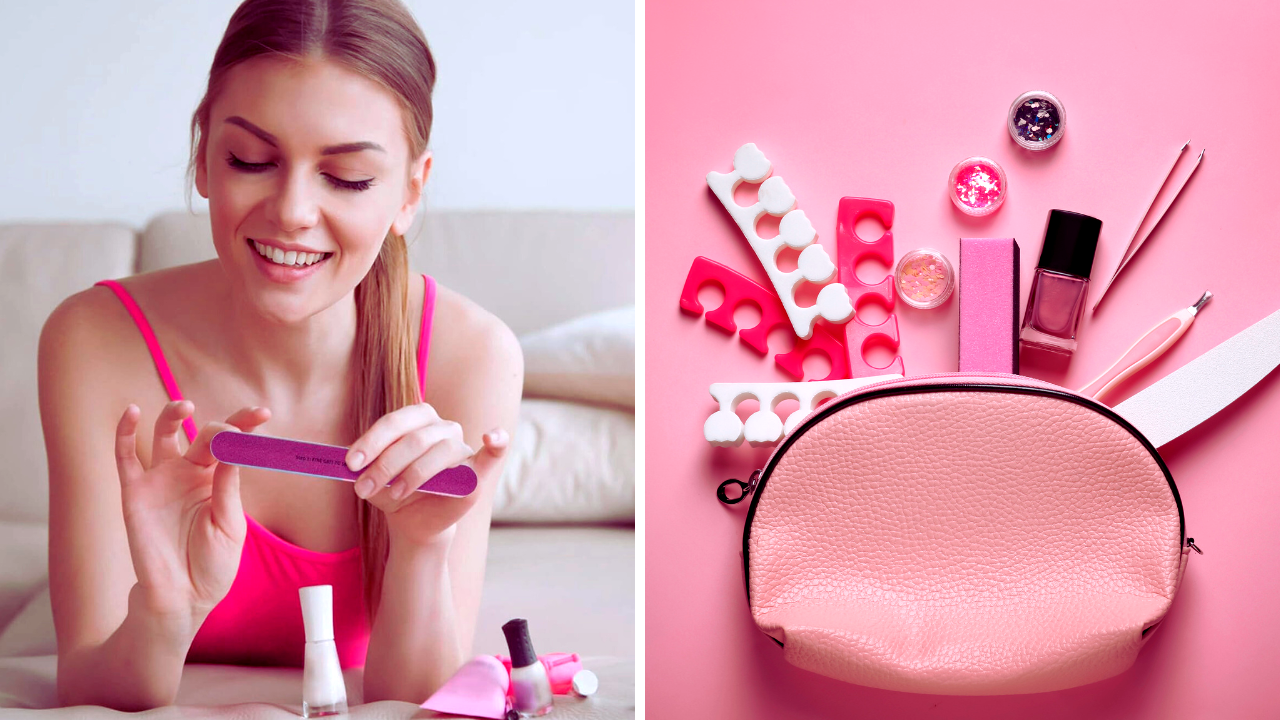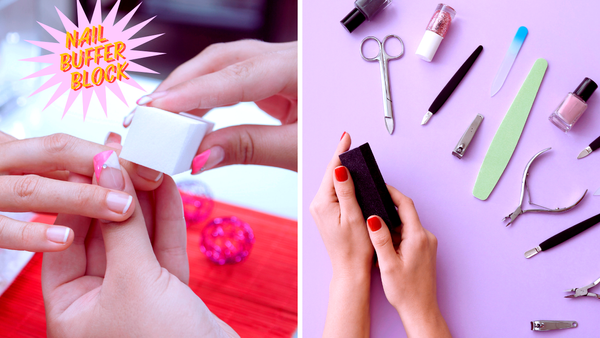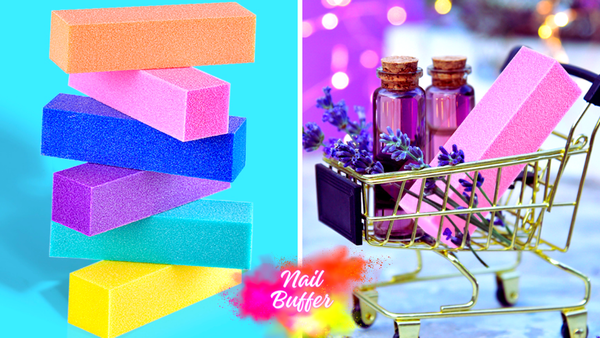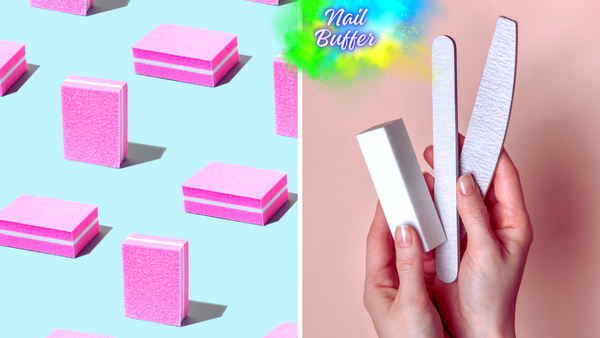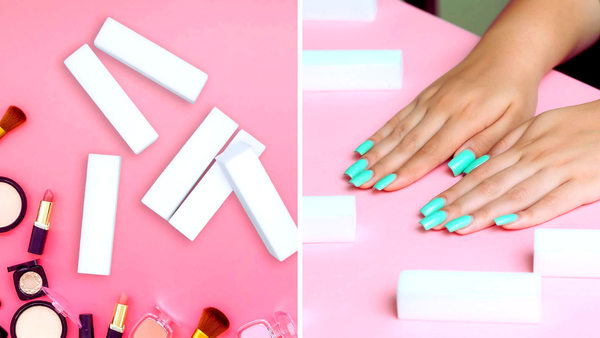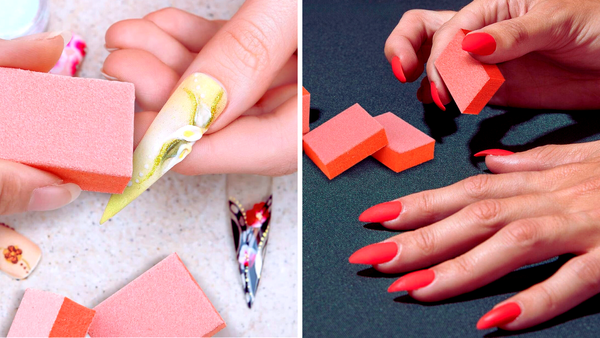Key Takeaways:
- Understand the ideal frequency for using a nail buffer to maintain healthy nails.
- Learn the proper technique for buffing nails to achieve a natural shine.
- Discover the risks of excessive buffing and how to avoid damaging your nails.
Buffing your nails can be a satisfying part of your manicure routine, giving your nails a smooth shine that enhances their natural beauty. But, like many things in life, moderation is key. The question of "How often should you use a nail buffer?" is crucial for anyone looking to maintain healthy nails without causing unintentional damage.
The Role of Nail Buffers in Manicure Tools
Nail buffers are an essential item in the arsenal of manicure tools. Unlike nail files, which shape the nail, nail buffers are designed to polish the nail surface, creating a shiny surface. They typically have different sides with varying grits, from the coarsest grit for smoothing ridges to fine grit for that high gloss finish. Buffing your nails can make them look more attractive even without nail polish, but it's important to understand the right frequency to avoid weakening the nail plate.

Understanding the Nail Buffering Process
Buffing nails involves gently rubbing the buffer across the nail surface in a back-and-forth motion. This action helps to smooth out any ridges and create a shiny surface on the natural nail. For those who prefer natural nails, a nail buffer can be a great way to achieve a polished look without the need for clear nail polish. However, it's essential not to overdo it, as excessive buffing can lead to thin, brittle nails.
Frequency of Buffing Natural Nails
For natural nails, the general recommendation is to buff no more than once a month. This allows your nails to recover from any potential thinning of the nail plate that can occur with buffing. If you have strong, healthy nails, you might be able to buff your nails slightly more often, but always pay attention to how your nails respond and adjust accordingly.
The Impact of Buffing on Nail Health
Buffing nails can have both positive and negative effects on nail health. When done correctly and not too often, buffing can make nails shiny and smooth. However, excessive buffing can weaken the nail bed, making nails more susceptible to breakage and peeling. It's a sign that you're buffing too often if you notice your nails becoming brittle or thin.

Proper Technique for Buffing Your Nails
To buff your nails correctly, start with the coarsest grit to smooth out ridges and work your way to the finer grit for a high gloss finish. Always buff in the same direction to minimize stress on the nail bed. After buffing, you can apply a small amount of cuticle oil to nourish the nail bed and skin around the nails.
The Significance of Nail Shape and Texture
When you first glance at your nails, it's not just the shine that catches the eye but also the shape and texture. How often should you use a nail buffer to maintain this? Well, shaping your nails with a nail file before buffing is crucial. Files create the foundation for nail art, ensuring the edges are smooth and your nails have the desired form. This step prevents the nail buffer from having to work overtime to shape the nail, which can lead to excessive buffing and potential damage to the nail plate.
After shaping, the texture of your nails comes into play. A smooth nail surface is a canvas for applying polish or achieving that high gloss without color. Buffing your nails gently removes ridges and creates an even surface. However, buffing too often or with too coarse grit can thin out and weaken the nail bed. It's a delicate balance to maintain healthy nails that are both strong and have a shiny surface. Remember, the goal is to buff just enough to create a smooth base for clear nail polish or more elaborate nail art.
The Evolution of Nail Buffers and Manicure Tools
Manicure tools have come a long way, and nail buffers are no exception. From the traditional block buffers to the more modern electric buffing tools, the options are vast. Each tool is designed to cater to different needs, whether it's for natural nails or artificial nails. The evolution of these tools means that buffing your nails can be a quick, efficient step in your nail care routine. However, it's important to choose the right buffer for your nail type. A too-abrasive buffer can cause peeling and breakage, especially on brittle nails.

On the flip side, advancements in nail buffers have also made it possible to achieve a salon-quality shine at home. The latest buffers often come with different sides, each designed for a specific buffing step—from the coarsest grit to the final step that polishes the nail to a high gloss. This means you can customize the buffing process to your nail's needs, reducing the risk of damage. Whether prepping your nails for a coat of polish or simply looking to maintain a natural shine, the right buffer can make all the difference. Just remember to use it sparingly—once a week is often enough to keep your nails looking their best without overdoing it.
Alternatives to Frequent Buffing
If you love the look of shiny nails but want to avoid buffing too often, consider using clear nail polish or a nail strengthener with a glossy finish. These products can provide a similar shine while protecting your nails from damage. Additionally, regular use of cuticle oil and hand cream can improve the overall health of your nails and cuticles.
Buffing Artificial Nails
The rules change slightly for those with artificial nails. Artificial nails can generally withstand more frequent buffing since they are not as prone to damage as natural nails. However, it's still important to be gentle and not buff too often to maintain the integrity of the artificial nails and the health of the underlying natural nails.

When to Avoid Buffing
If your nails are damaged, peeling, or showing signs of stress, it's best to give them a break from buffing. Instead, focus on nail care that promotes healing, such as using nail strengtheners and avoiding other manicure tools that can cause further damage.
Nail Buffer Maintenance
It's important to keep your nail buffers clean to prevent the transfer of bacteria or fungi from one nail to another. After each use, brush off any nail dust and sanitize the buffer. Also, replace your nail buffers regularly to prevent the spread of potential infections and ensure they work effectively.
Professional Advice from a Nail Technician
If you're unsure about how often to buff your nails or the best technique to use, consider consulting a professional nail technician. They can provide personalized advice based on the condition of your nails and demonstrate the proper buffing technique.

Incorporating Buffing into Your Nail Care Routine
Buffing should be just one step in your overall nail care routine. Always start with clean, dry nails, and after buffing, give your nails time to air dry before applying polish or engaging in activities that could cause wear. Remember, the goal is to create healthy, shiny nails without causing damage.
Summary
Buffing your nails can enhance their natural beauty, but it's important to do it correctly and not too often. Aim to buff natural nails no more than once a month and always use the proper technique. For artificial nails, you can buff a bit more frequently, but still with care. Remember to maintain your nail buffers and seek professional advice if needed. By following these guidelines, you can enjoy the benefits of buffing without compromising the health of your nails.
FAQ Section
Can buffing your nails cause damage?
Yes, excessive buffing can weaken the nails, making them brittle and prone to peeling and breakage. It's important to buff sparingly and gently to avoid damaging the nail plate.
How can I make my nails shiny without buffing them too often?
You can use clear nail polish or a nail strengthener with a glossy finish to achieve a shiny look. Regularly applying cuticle oil and hand cream can also improve the natural shine of your nails.
How do I clean and maintain my nail buffer?
After each use, brush off nail dust and sanitize the buffer with an appropriate cleaning solution. Replace your nail buffers regularly to prevent the spread of bacteria and ensure they remain effective.
